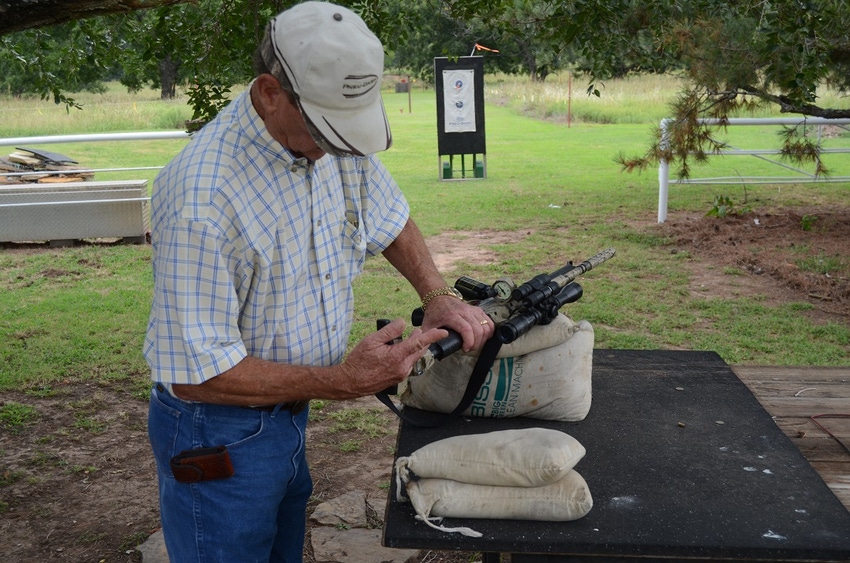
After some idiot imbedded medicinal darts into a couple of cattle carcasses in 2015, one of the most useful tools for rangeland cattle producers suffered a black eye.
I'm referring to the use of dart guns, more correctly known as remote delivery systems, to deliver antibiotics or other medications to sick cattle. Where cattle are contained and good facilities are available, this is probably a waste of money, but where cattle are run on rangeland with poor or no facilities, it is a vital tool that can save cattle, save money and improve animal wellbeing. Beef Producer did an extensive article on how to properly use these tools in November 2014 on page 14 and page 15.
Next we saw a couple of mini-experiments that didn't prove much, but may have reiterated that poorly handled remote delivery equipment could cause meat problems or fail to correctly deliver medications.
Now, a research study in Texas has shown correctly handled remote delivery systems can deliver subcutaneous meds on par with hand-delivered syringe subcutaneous delivery of drugs.
The study is titled "Comparison of drug delivery devices for use in beef cattle," by D.T. Bechtol, DVM, of the Agri Research Center, Inc., Canyon, Texas.
Initially a total of 48 calves were used in this study, with 12 euthanized and examined in each of four groups at 3, 10, 17, and 31 days following administration of the injections. On each of these four days, 12 of the cattle subjects were euthanized and necropsied.
All the injections were 7cc of sterile saline solution containing a blue, food-grade dye.
In each group of 12, six were injected with Pneu-Dart 7cc Type 'U' Slo-Inject Remote Delivery Device (dart) equipped with a ½-inch needle and facilitated by a gelatin collar retention device. The other six were injected with a 7cc Pneu-Dart Type 'U' Slo-Inject Remote Delivery Device (dart) equipped with a ¾-inch tri-port needle facilitated by a gelatin collar retention device. All shots were delivered perpendicular to the subjects and in the right side of the neck in the BQA-approved area. All RDDs (darts) were delivered using a Pneu Dart “XCaliber” gauged CO2 projector from a distance of about seven yards at a pressure setting of 3.9 – 4.0 Bar. All 12 of the cattle in each group also were given a hand injection with syringe on the left side of the neck in the BQA-approved region. With some variations, these included a two-handed injection with the skin "tented" and a angled, single-handed injection. This was done with a standard ½-inch 16-gauge needle. Another 12 calves were added at the end of the study and were given generally the same treatment.
At the 10-day mark the researchers began again to inject some or all the calves and then euthanize them and take samples within 5 minutes for analysis.
Generally, there was minimum effect seen from either the 1/2-inch RDD or the hand injections. There appears to have been a little more dye make it into the muscle tissue with the longer, tri-port needles.
At the three-day mark, there appeared some lesions from most or all the injections, and at the 10-day mark these seemed to have mostly disappeared.
Of the total sixty-eight RDDs delivered, sixty-eight detonated, while two of the sixty-eight partially deployed with one more so than the other. This means on those two, not all the solution was injected.
The gross and histopathology results showed an RDD equipped with a ½-inch needle had good skin penetration and provided subcutaneous injection with no muscle damage, Bechtol said. He added that the 3/4-inch tri-port needle had good skin penetration with majority subcutaneous injection, yet did have minimal muscle penetration.
"Therefore, the remote delivery device equipped with a ½-inch 14-gauge needle is adequate for subcutaneous injections with least amount of muscle penetration and equal to that of a hand syringe injection if the hand syringe is not administered without proper care," he said.
One of the biggest issues with remote delivery projectors, says Pneu-Dart representative Mark Waters, is setting the projector properly for the weight (CCs) of the projectile and distance to be covered. Read our story in Beef Producer for an explanation, and look at the Pneu-Dart trajectory charts to get an idea how this works.
About the Author(s)
You May Also Like




